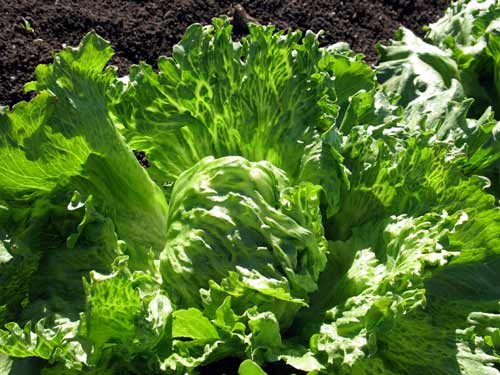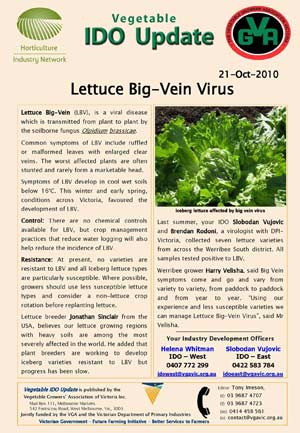|
|
Lettuce Big-Vein (LBV), is a viral disease which is transmitted from plant to plant by the soilborne fungus Olpidium brassicae. Common symptoms of LBV include ruffled or malformed leaves with enlarged clear veins. The worst affected plants are often stunted and rarely form a marketable head. Symptoms of LBV develop in cool wet soils below 16°C. This winter and early spring, conditions across Victoria, favoured the development of LBV.
Control: There are no chemical controls available for LBV, but crop management practices that reduce water logging will also help reduce the incidence of LBV. Resistance: At present, no varieties are resistant to LBV and all Iceberg lettuce types are particularly susceptible. Where possible, growers should use less susceptible lettuce types and consider a non-lettuce crop rotation before replanting lettuce. Lettuce breeder Jonathan Sinclair from the USA, believes our lettuce growing regions with heavy soils are among the most severely affected in the world. He added that plant breeders are working to develop iceberg varieties resistant to LBV but progress has been slow. Last summer, your IDO Slobodan Vujovic and Brendan Rodoni, a virologist with DPI-Victoria, collected seven lettuce varieties from across the Werribee South district. All samples tested positive to LBV. Werribee grower Harry Velisha, said Big Vein symptoms come and go and vary from variety to variety, from paddock to paddock and from year to year. “Using our experience and less susceptible varieties we can manage Lettuce Big-Vein Virus”, said Mr Velisha. For more information contact your Industry Development Officers :
|
|


